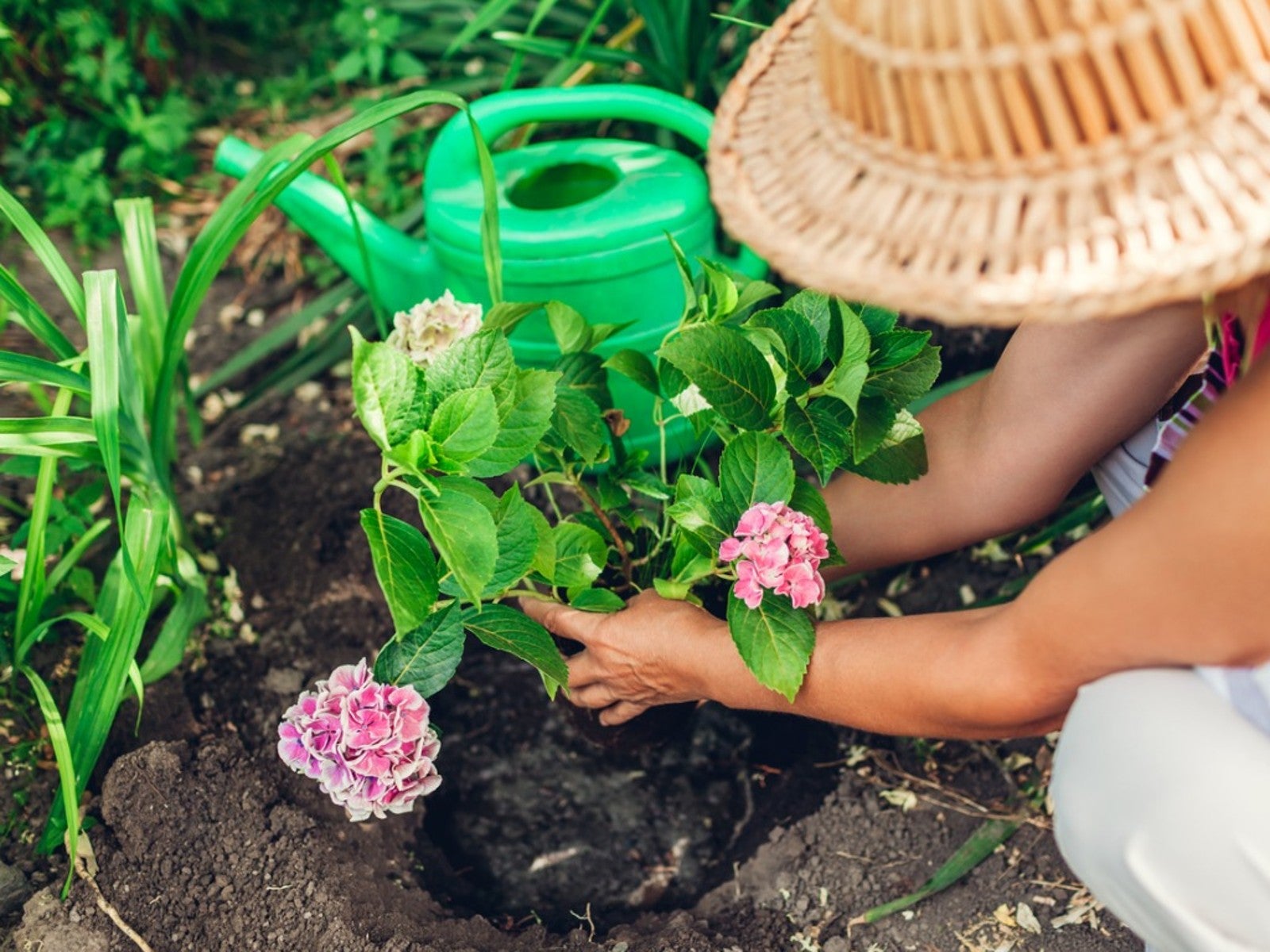Benefits Of Planting Hydrangeas In The Fall


Ready to add hydrangea shrubs to your backyard? One of the first decisions you’ll need to make is when to plant hydrangea bushes.
Can you plant hydrangeas in the fall? You can. And though the common wisdom is that you can plant hydrangeas in fall or spring, we think fall is the better idea. Read on to find out why.
Meet the Hydrangea
When you hear someone speaking of hydrangeas, do you automatically think of the bigleaf? Those snowball-size blossoms, (Hydrangea macrophylla), are so amazing that the bigleaf is one of the most popular types of hydrangea, and they can turn from blue to pink depending on how you amend the soil.
But bigleafs are only one of many varieties of hydrangea. And, when you count up the cultivars, there are literally hundreds of choices. If you need something drought-tolerant, consider the oakleaf. It also provides a fiery autumn display. Panicle hydrangeas, like the popular PeeGee, have flowers in cone-shaped clusters and thinner leaves.
Why not try a native hydrangea, like smooth hydrangea? It has heart-shaped leaves, and ‘Grandiflora’ is one of the most common cultiars.
All hydrangeas are relatively low maintenance, so pick your favorites. Just be sure to get a plant that will thrive in your hardiness zone in the site you have in mind. Once you’ve confirmed that, your mind will turn to planting.
Best Time to Plant a Hydrangea
Many experts suggest that the best time to plant a hydrangea is in the fall. Both spring and fall are usually given as options, since these shoulder seasons generally offer mild weather that works well for plants trying to establish root systems. But planting hydrangeas in fall has the edge.
Gardening tips, videos, info and more delivered right to your inbox!
Sign up for the Gardening Know How newsletter today and receive a free copy of our e-book "How to Grow Delicious Tomatoes".
Since garden hydrangeas are deciduous shrubs, they will not produce leaves or flowers in winter. Rather, they will go into dormancy and drop their leaves before winter. That means a hydrangea planted in fall has many months to dedicate its energy toward establishing a strong root system. In addition, autumn weather tends to include regular rainfall which also helps the transplanted shrubs.
Risks Inherent in Fall Planting
No matter whether you plant hydrangeas in spring or fall, you will run a risk of losing the new shrubs. Spring planting is risky because late frosts can stop hydrangea growth in its tracks. Depending on exactly when the frosts occur, the plant may even die.
But fall planting also carries a risk of unseasonably cold weather. Plants usually require at least six weeks of good weather to set up the establishment of their root systems. And there is no guarantee that the year you plant will be like the prior few years. To avoid a bigger risk of frost during establishment, get those hydrangeas in the ground by early October.
Increase Your Chances of Success
Thinking ahead and careful planning will make it more likely that the shrubs you plant in fall will thrive. Use the month before planting to evaluate the planting site to match the sun exposure with an appropriate hydangea.
Soil is another consideration. Hydrangeas in general prefer soil that drains well. But mixing organic matter like compost into the soil both improves that drainage and also ups soil nutrients.

Teo Spengler is a master gardener and a docent at the San Francisco Botanical Garden, where she hosts public tours. She has studied horticulture and written about nature, trees, plants, and gardening for more than two decades. Her extended family includes some 30 houseplants and hundreds of outdoor plants, including 250 trees, which are her main passion. Spengler currently splits her life between San Francisco and the French Basque Country, though she was raised in Alaska, giving her experience of gardening in a range of climates.
-
 12 Lush Alternatives To A Lawn For Sustainable Spaces
12 Lush Alternatives To A Lawn For Sustainable SpacesAlternatives to a lawn are beautiful and also beneficial to your local ecosystem and its pollinators. Explore our top picks for plants to replace grass.
By Tonya Barnett
-
 Types Of Tomatoes Explained: Explore The Many Wonderful Shapes, Colors, Flavors, & Best Uses
Types Of Tomatoes Explained: Explore The Many Wonderful Shapes, Colors, Flavors, & Best UsesThe world of tomato varieties is vast and fascinating. Learn about the key types to grow in your garden, tailored to your preferences and space.
By Amy Grant